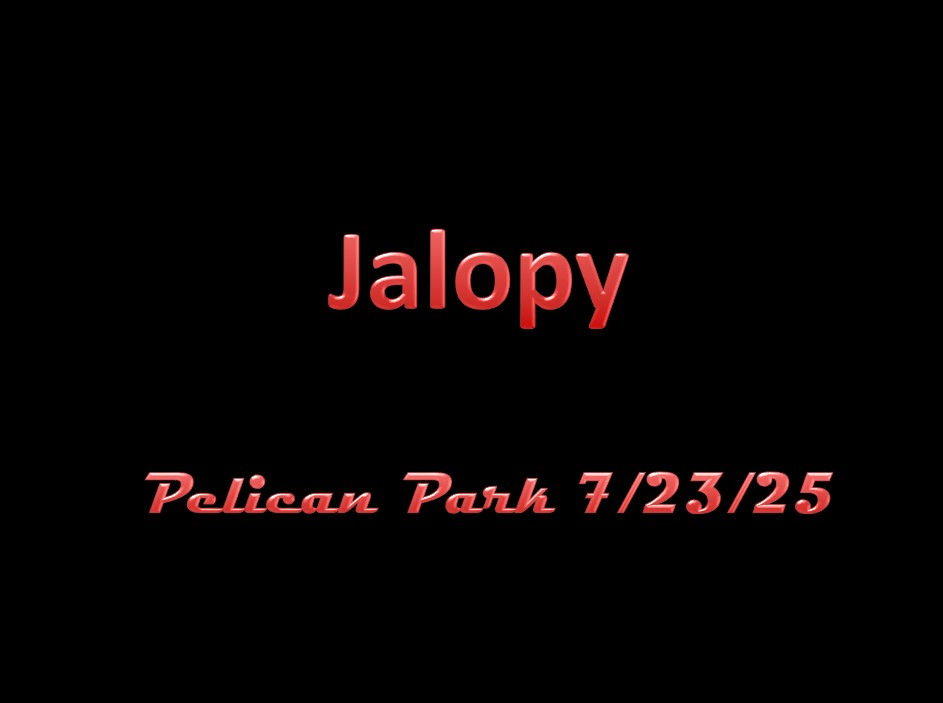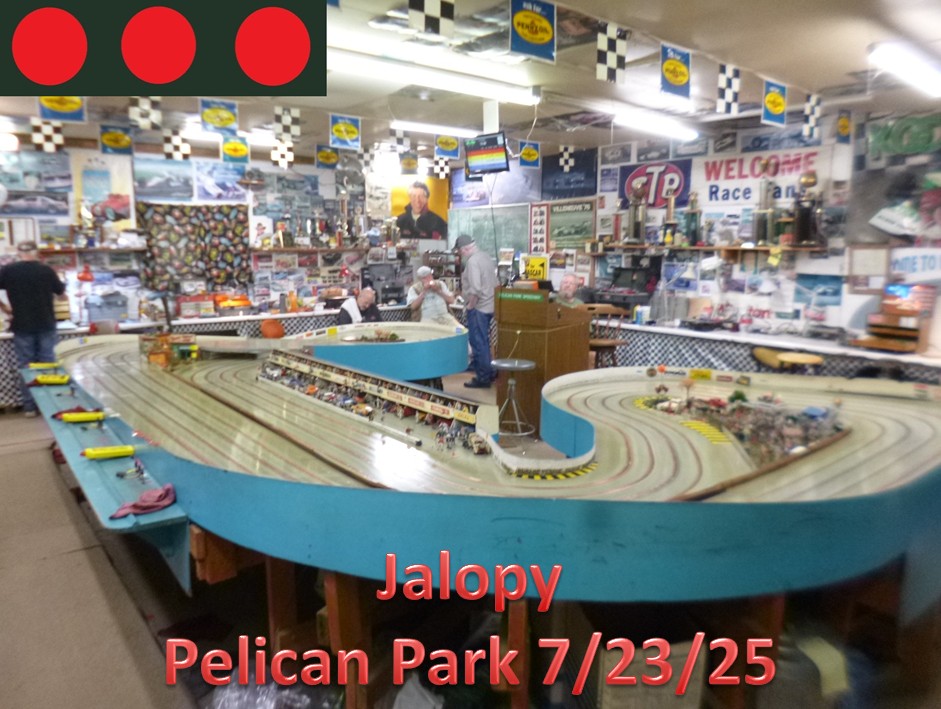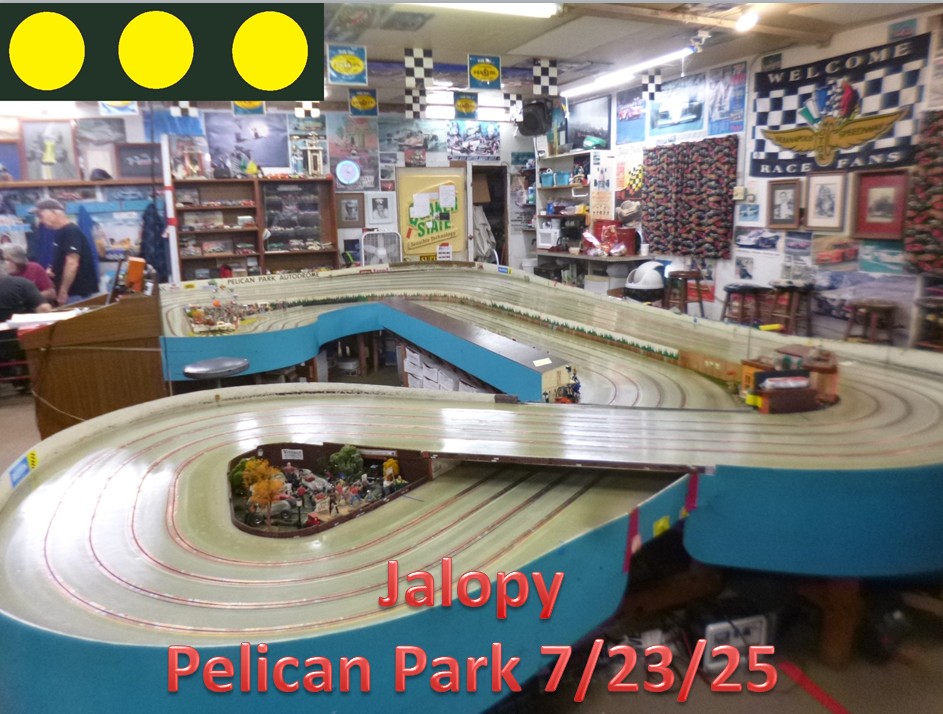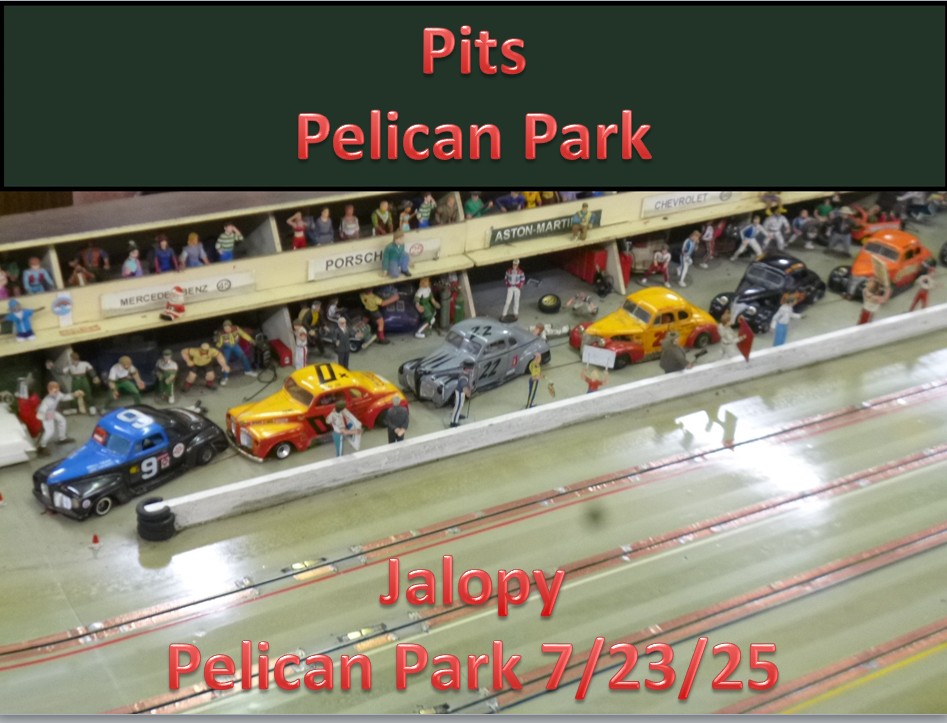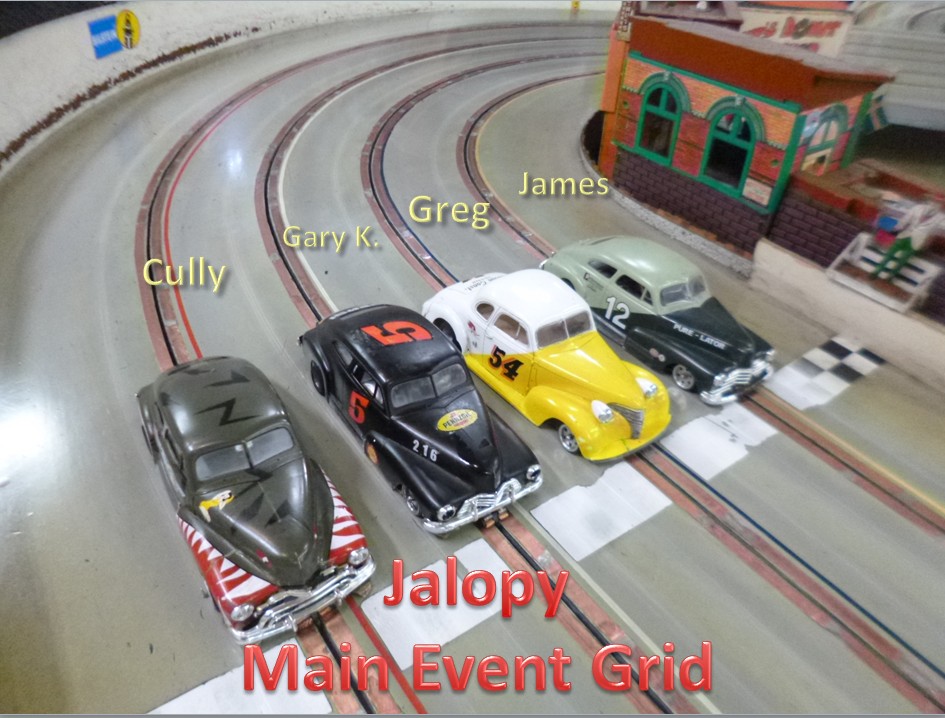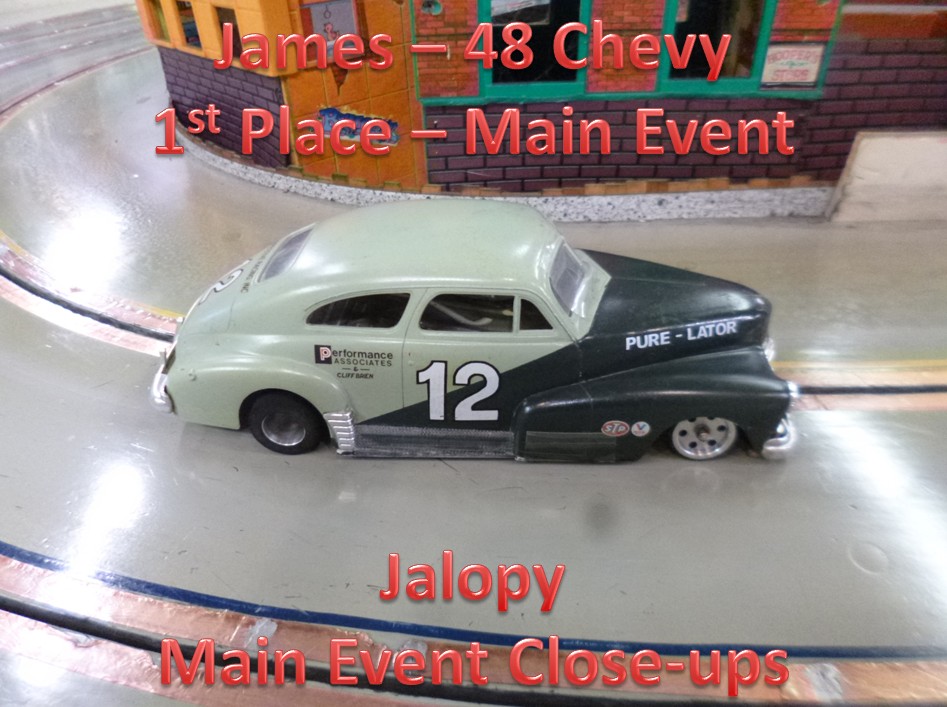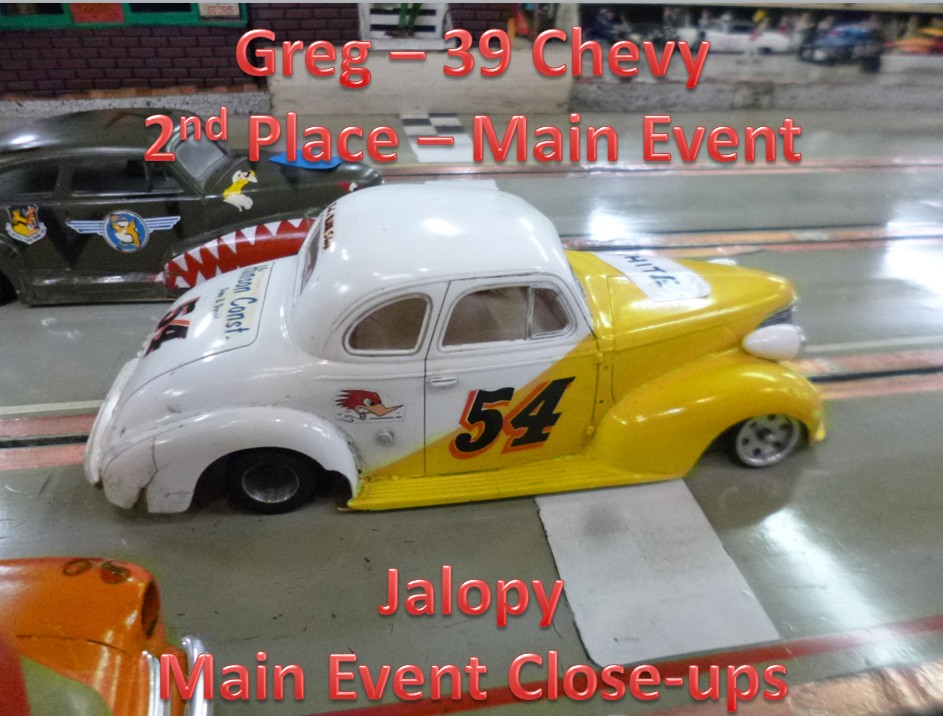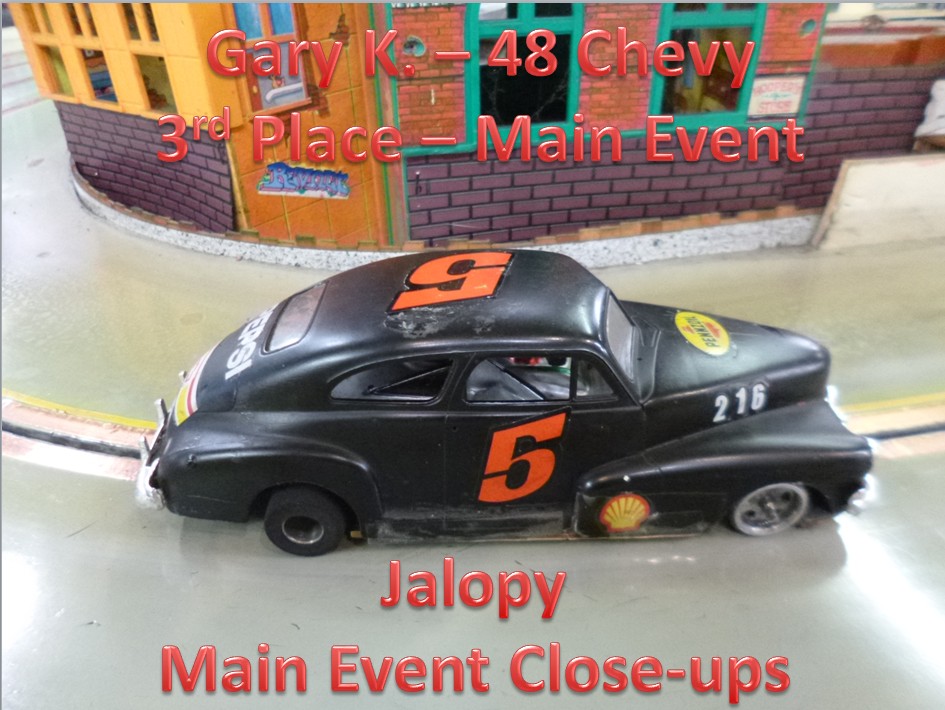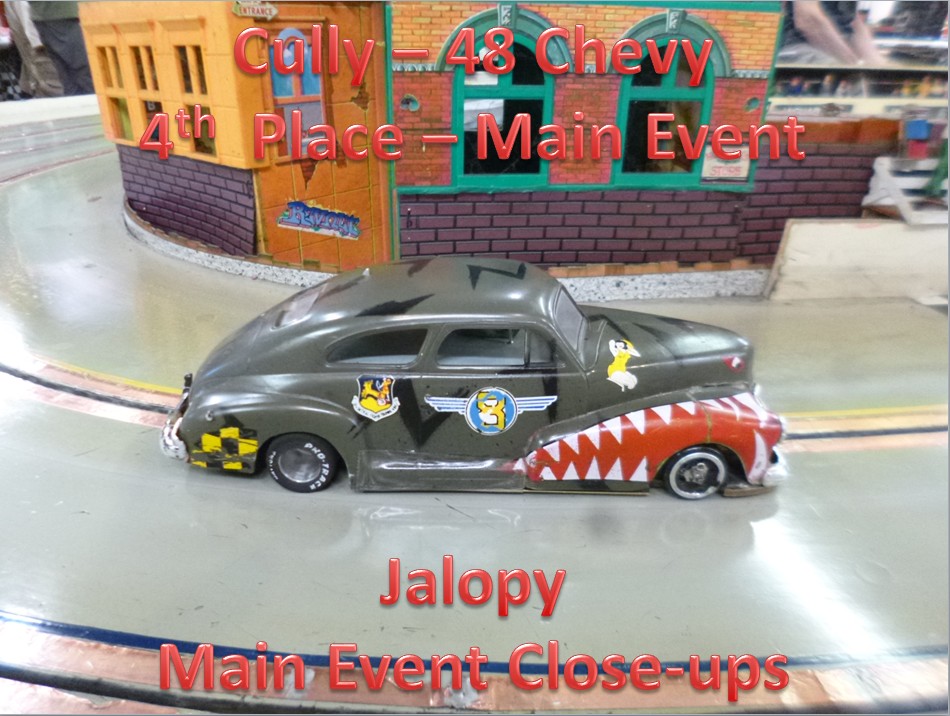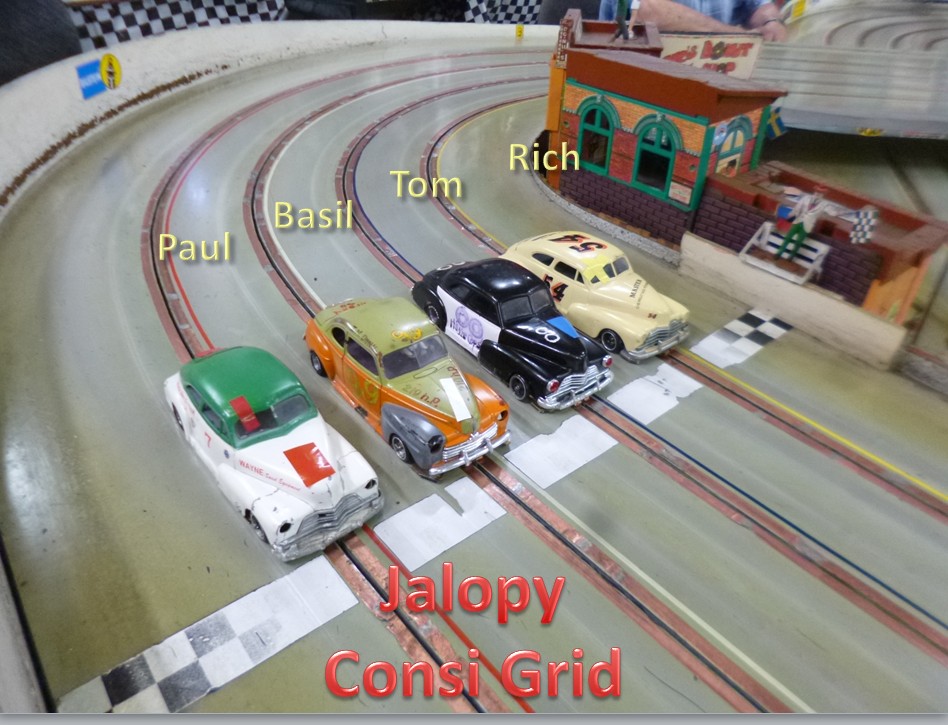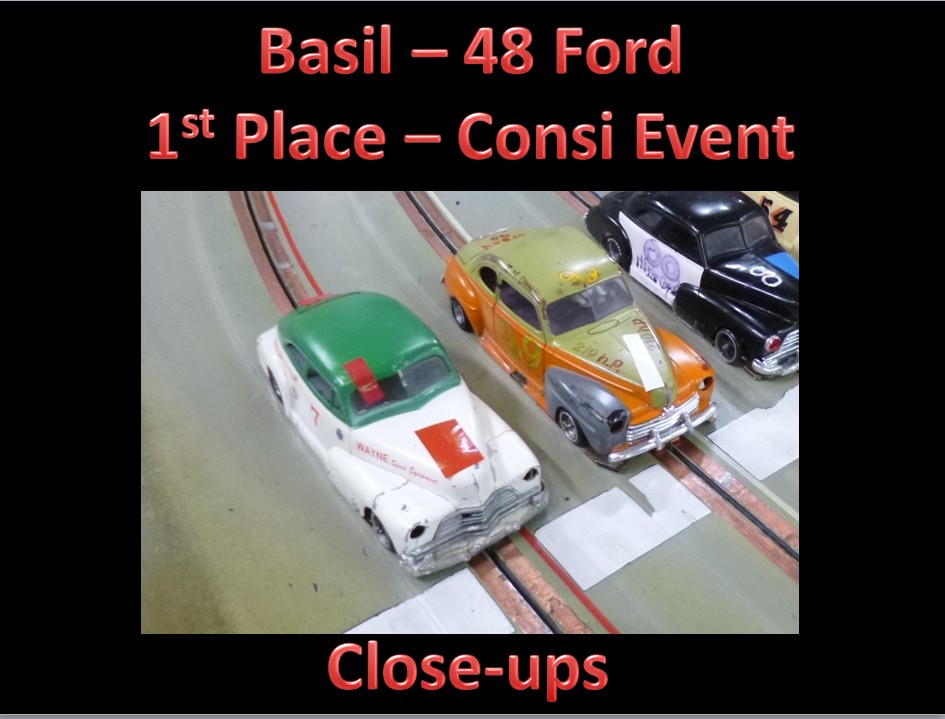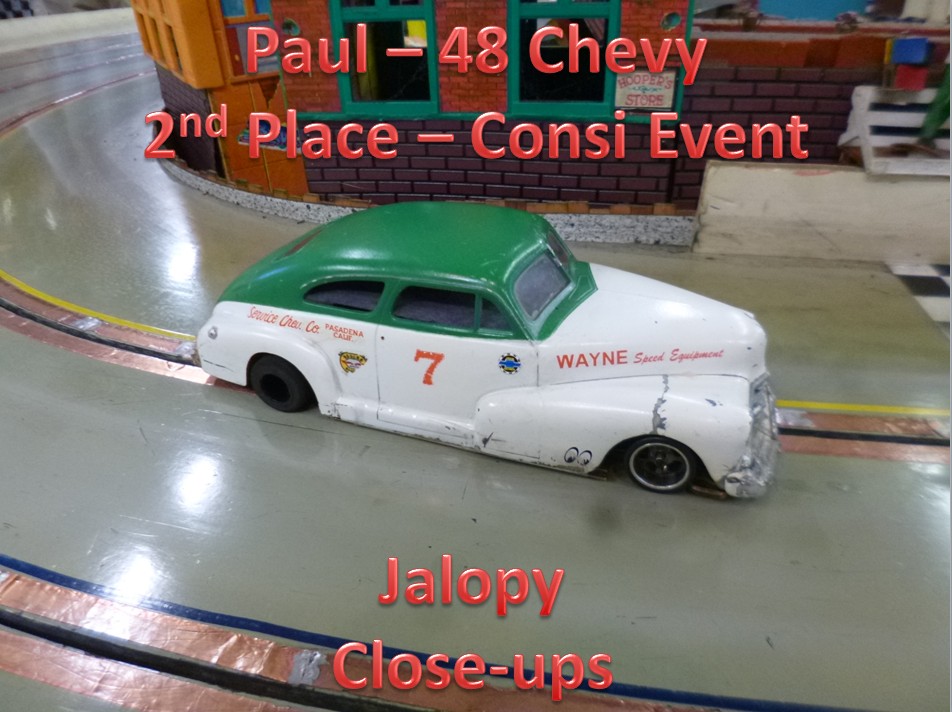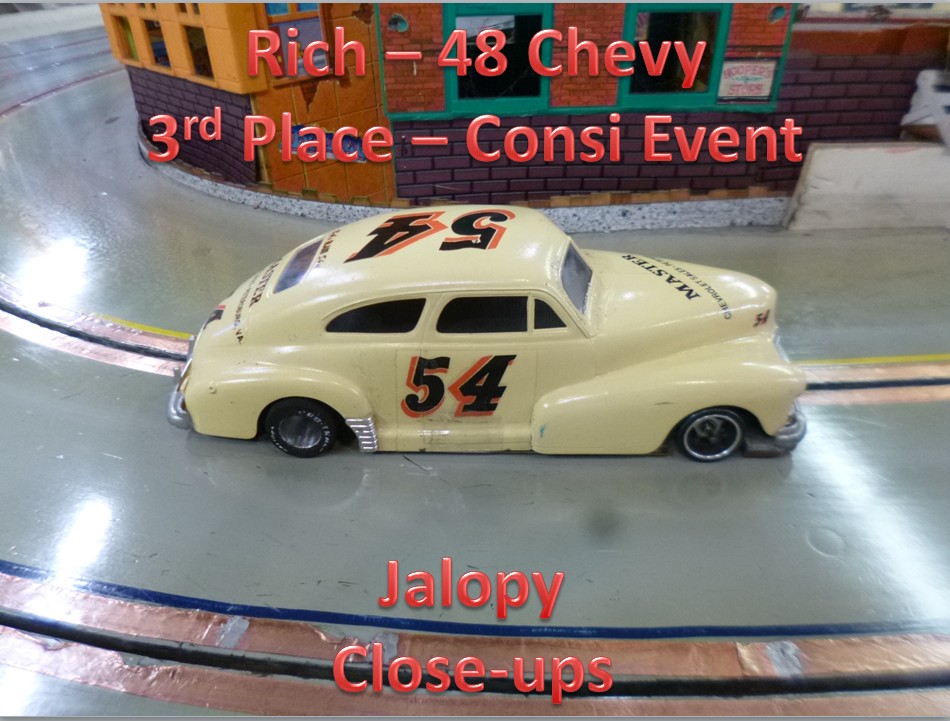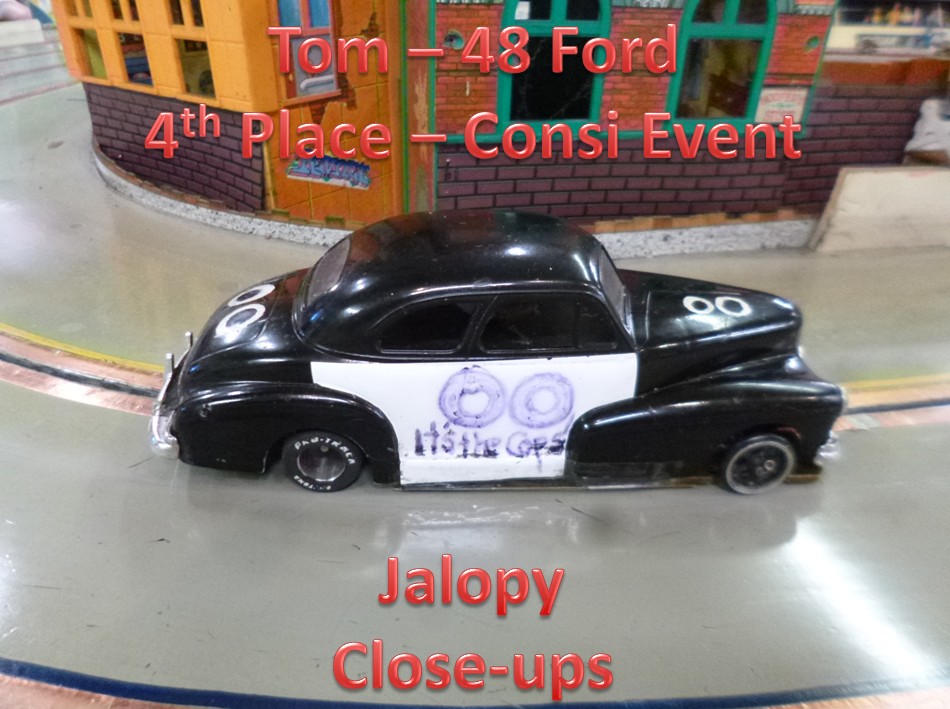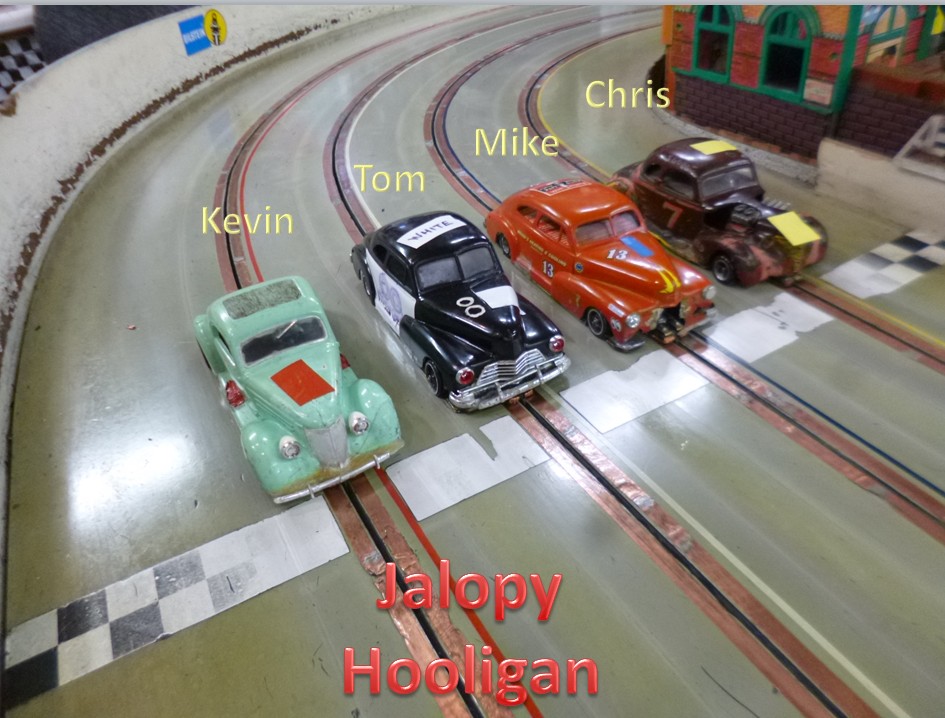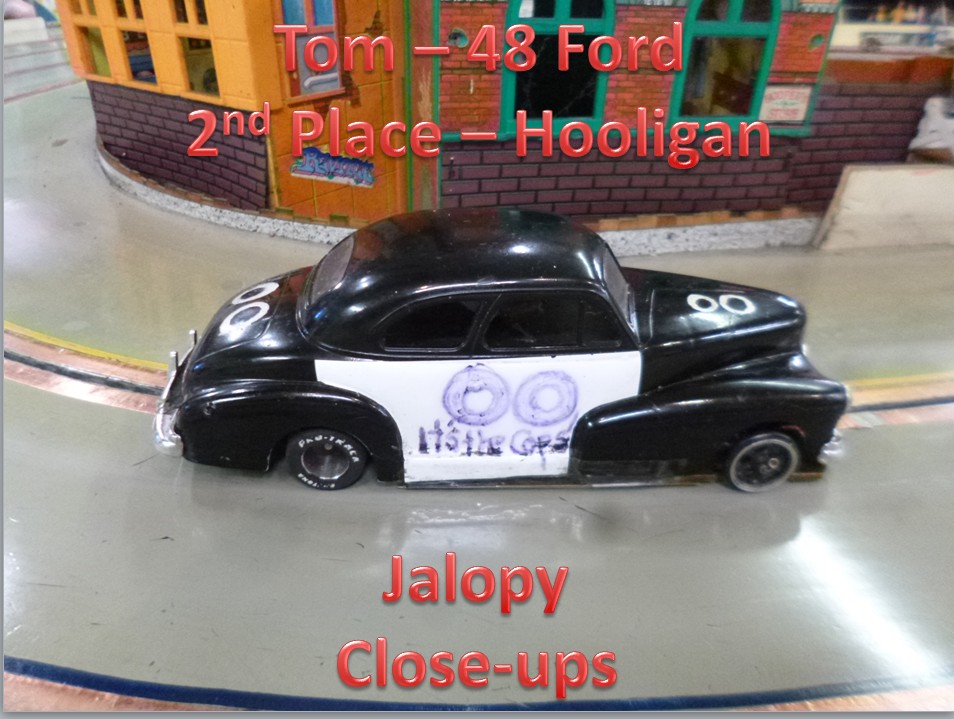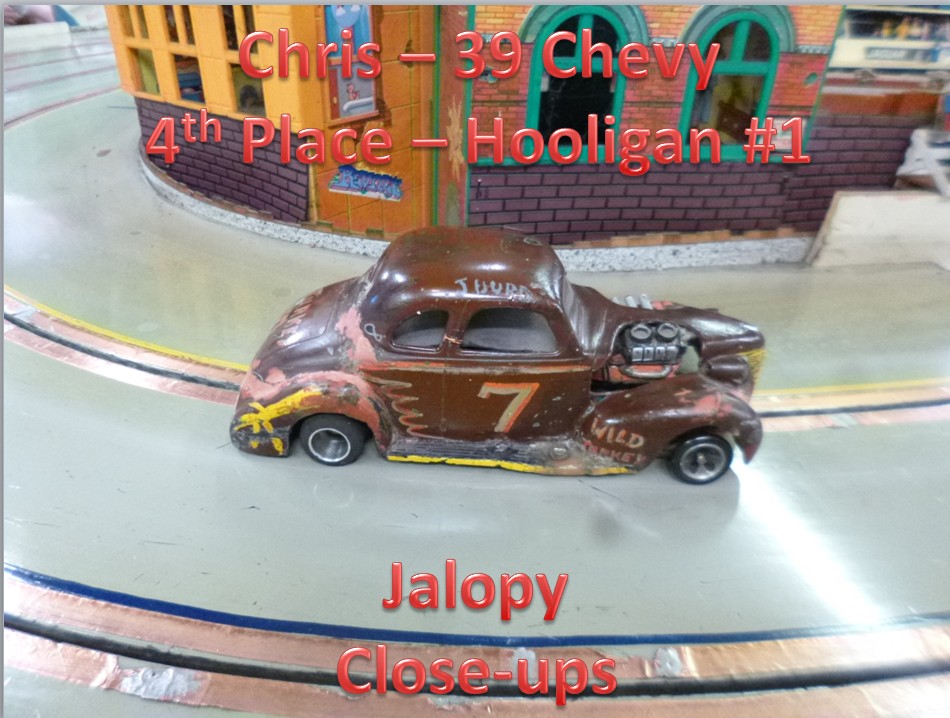Before getting into the details of the Jalopy Race at Pelican Park, I would like to spend a few paragraphs on one of its founding members, the late Doug Haynes
A Tribute to Doug
Doug Haynes sat quietly on a metal-framed chair at his vintage 1950s Formica-topped breakfast table.
“I hate the law. I hate the tedious research of arcane statutes, the boring briefs, the futility of it all. What’s the end result? Transferring money from one pocket to another. The law involves no creativity, no tangible product. It’s just not for me.”
He asked himself: What should I be doing with my life? Deep down, he already knew the answer. It wasn’t law, nor a professional driving career (see editor’s note below). It was his passion for art—and perhaps even more importantly, the dream of developing a model car racing club for scratch builders and modelers alike.
Doug would go on to pursue his art and ultimately create molds for more than fifty of his favorite machines—some in 1/32 scale, others in 1/24. All these years later, his vision lives on. Pelican Park Autodrome is a thriving, non-commercial model car racing club in Eugene, Oregon, with a loyal following. Many have been part of Doug’s dream for decades.
Of course, no one but Doug will ever know the true turning point in his life—but perhaps it unfolded as I imagine.
Back in 2005, I interviewed Doug and wrote an article for a popular slot car website. I’ve attached a transcript of that interview as a PDF. Many of you might find it interesting—and you may even discover something new about this slot car titan.
Before diving into the recent Jalopy race, I’d like to share a couple of Doug Haynes stories.
Editor’s Note: Doug held a National Competition License from the Sports Car Club of America. He began racing in Formula Ford and eventually owned a Lotus 23B powered by a 2-liter BRM engine.
Doug Stories
I first visited Pelican Park nearly 20 years ago and became a semi-regular for a time. On one such occasion, I was feverishly practicing and happened to be on the driver’s podium next to Doug.
All of a sudden, Doug turned to me and said, “Are you doing that on purpose to distract me?”
I had no idea what he was talking about.
“That controller is making a scraping sound that’s annoying the hell out of me,” he added.
At first, I thought he was joking—but he wasn’t. I unhooked, lubricated the wiper arm, and tried to refocus. The head game worked—it rattled me. That was Doug. A bit eccentric. Over time I learned that “psyops” was just another game he liked to play.
Here’s another gem recently relayed by Cully:
Doug and Cully were lined up in adjacent lanes. Doug leaned over and whispered, “I know your machine is better than mine, so I’m going to take you out in one of the first few turns.”
And by God, he did.
Jalopies at Pelican Park
The Jalopy class at Pelican Park pays tribute to the chunky, full-fendered American sedans of the late 1930s and 1940s—cars with running boards, massive fenders, and plenty of attitude. Eligible bodies must be U.S. 2- or 4-door sedans from 1936 to 1948. Underneath, these rides run on custom-built, in-line brass and wire chassis—each one a handcrafted marvel of engineering.
But don’t be fooled by their nostalgic look. These tall sedans are notoriously tricky to drive, thanks to their high center of gravity. Thankfully, the rules limit power to Deathstar or ProSlot 16D motors, not the twitchier “super” motors used in the NASCAR class. That helps—just barely.
In recent years, the Jalopy class has drawn smaller fields compared to more mainstream classes. But the most recent race brought out eleven dedicated slot-heads, including myself.
Both James and I had competitive cars and made the trip to Pelican Park to test our skills. Pre-race drama was already brewing. I watched James test both of his very fast entries—a ’39 Chevy and a ’48 Chevy. From past experience, I knew the ’39 was his “go-to,” but on this day it seemed tight and twitchy. James opted instead for the ’48.
Meanwhile, Greg was struggling. His Jalopy, to use his words, “sucked.” James offered up his sidelined ’39 as an alternative, and Greg gladly accepted. He quickly diagnosed the problem and swapped in narrower rear wheels. The car came alive. At that point, I suspected Greg was going to be a real threat in the Main.
Qualifying – Win to Get In
With eleven racers, qualifying followed the “win to get in” format. Each driver was randomly placed in three distinct 50-lap mini heats. The winner of each heat advanced directly to the Top Eight and sat out subsequent rounds. Those winners—Paul, Gary K., and James—are regular front-runners, but luck always plays a role.
The next five heats filled out the rest of the Top Eight. Joining the winners were Greg, Cully, Rich, Basil, and Tom.
These eight were then randomly sorted into two semi-main events. The top two from each would move on to the Main Event, while the rest were relegated to the Consi.
Realistically, I didn’t expect to make the Main. I could see from lap times that I was 0.1 to 0.2 seconds slower per lap than the leaders. But I hoped for a solid showing in the Consi, where competition would better match my 48 Chevy’s pace.
In the end, the four who advanced to the Main were: Cully, James, Greg, and Gary. Basil, Rich, Tom, and Paul went to the Consi.
The Main Event
There was a major incident on lap one when Greg, Gary, and Cully tangled up—leaving James with a commanding half-lap lead. He was never challenged after that.
Greg, driving James’ dialed-in ’39 Chevy, steadily pulled away from the others and secured second place. Gary and Cully followed in third and fourth, respectively. See below for an image of the grid and close-ups of the cars
The Consi
The Consi turned out to be quite exciting—especially for me.
Paul, Basil, and I launched off the line practically glued together. Unlike the Main, there were no early wrecks.
Over the next few laps, I managed to edge out a slim half-lap lead. But my unfamiliarity with the track came back to bite me. I had a costly off in the “76 Turn”—a tight left-hander in the yellow lane.
That mistake let the veterans slip past. They rarely make unforced errors, and this time was no exception. Basil took the win, Paul came second, and I brought home third. Tom rounded out the field in fourth.
Below are images of the grid and close-ups of the cars.
Hooligans
As fourth place finisher in the Consi, Tom joined Mike, Kevin and Chris in the Hooligan. Mike and Tom battled for the top spot for the entire heat with the lead changing hands several times. In the end Mike finished first with Tom second. Kevin and Chris were third and fourth respectively.
Below is an image of the grid and close-ups of the cars.
Final Thoughts
Another great night of racing at Pelican Park—tight battles, strategic driving, and plenty of laughs. The Jalopy class remains one of the most rewarding (and challenging) divisions for those willing to put in the time and tuning.
I’ll definitely be back on the grid next time.




